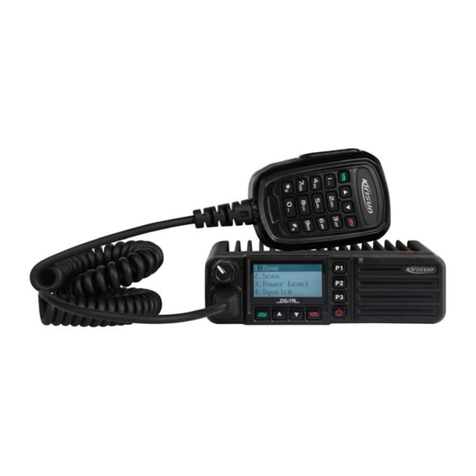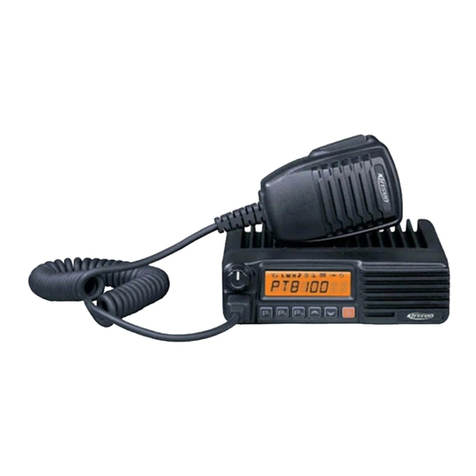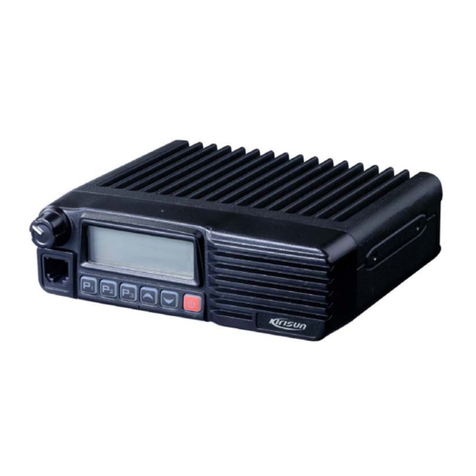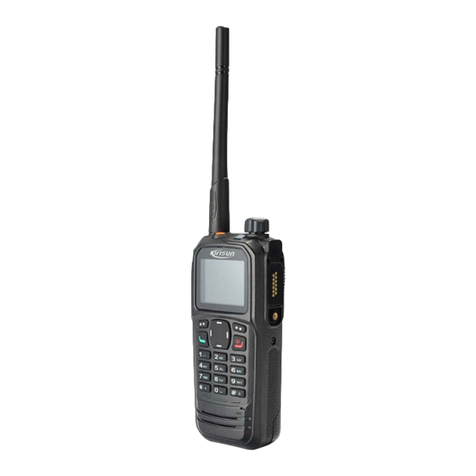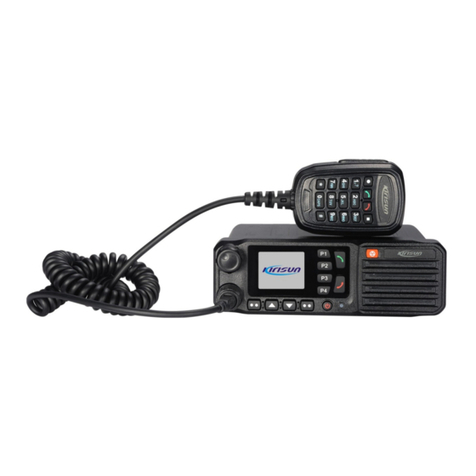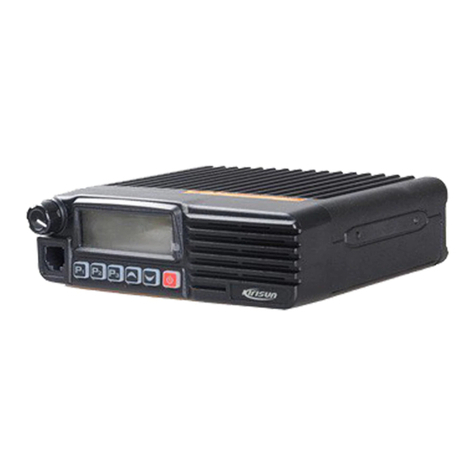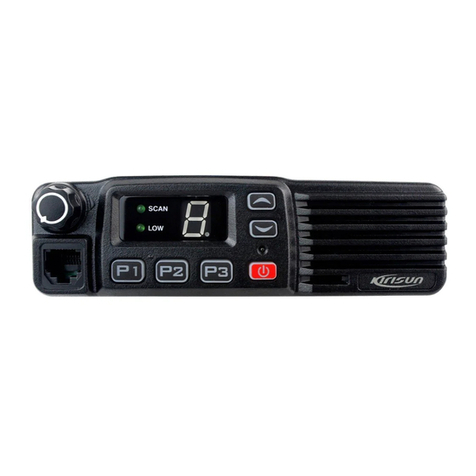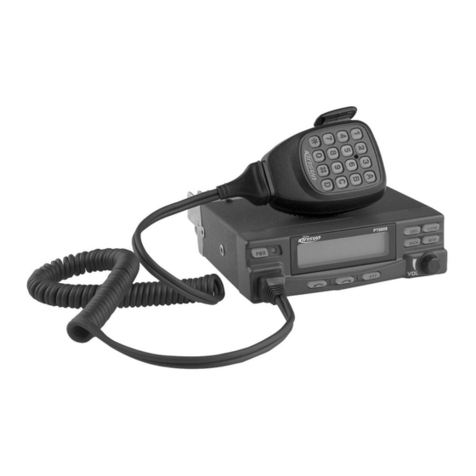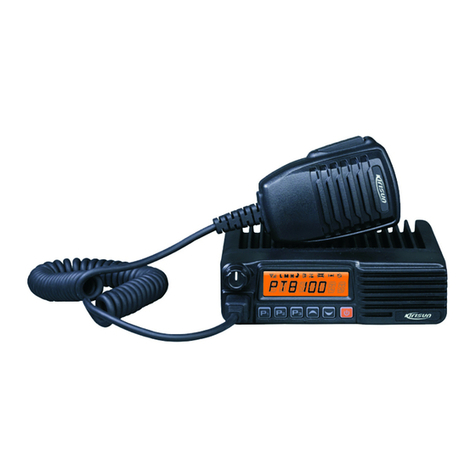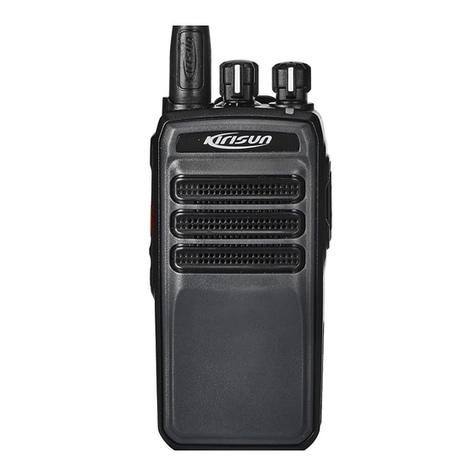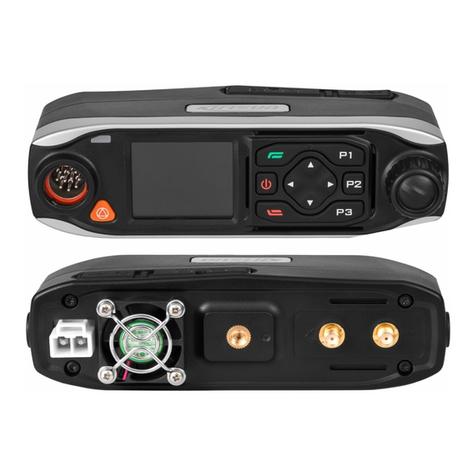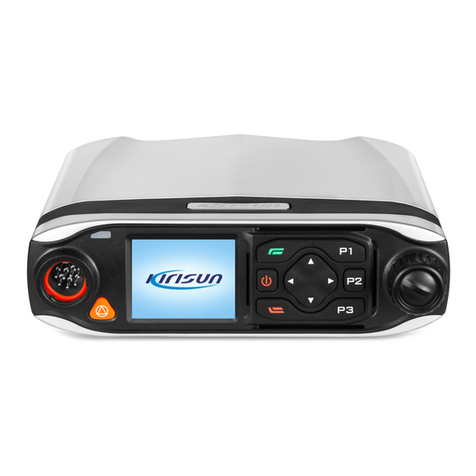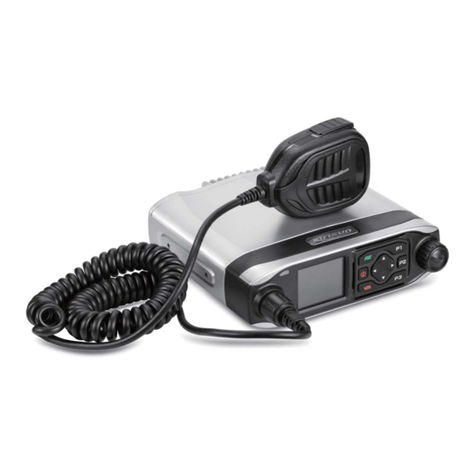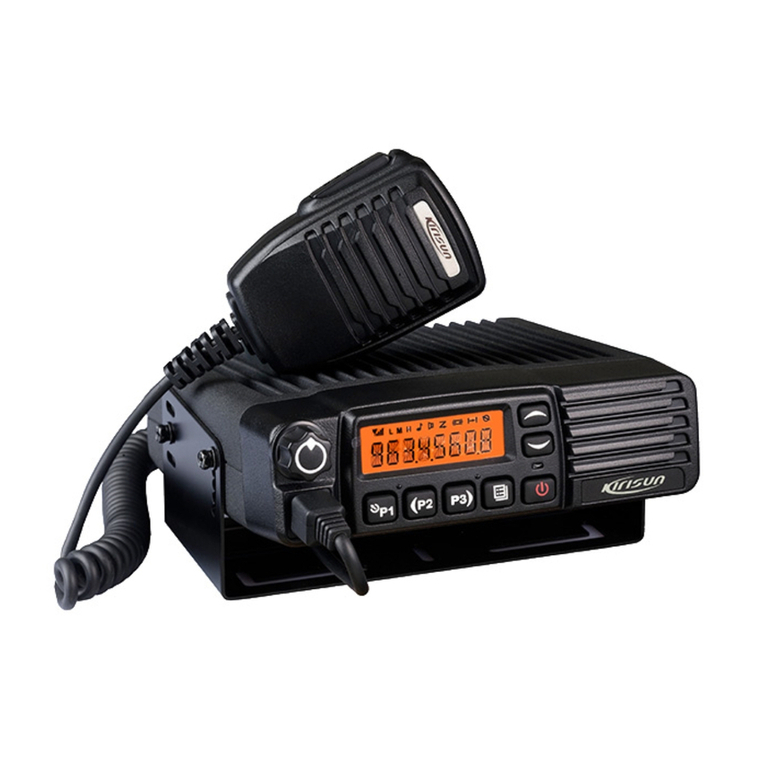FP420 Service Manual
Page 5 of 50
Moniter: If the current analog channel is with CTCSS/CDCSS, press the key to squelch
mode to cancel the CTCSS/CDCSS function. Press the key again to return to the original
status.
Emergency alarm open: Start the EmergencyAlarm function to seek help.
Emergency alarm close: Finish the EmergencyAlarm function.
Squelch open/close: Open/close the squelch function to receive weak signal on analog
channels.
Scan: Check activity of other channels. Press the key to open/close this function.
Whisper: When the whisper function is on, others can hear clearly even speakomg in a
low voice.
Aler tone on/off: Open/close the alert tone.
2.3LED Indicator
Red LED lights on: the radio is transmitting.
Green LED lights on: the radio is receiving.
Red LED flashes: low battery, the battery needs to be charged.
2.4 Basic Operation
Turn On/Off the radio
Clockwise rotate the knob to turn on the radio, and counterwise rotate the knob until
there is a click sound to turn off the radio.
Selecting a channel
Each channel in your radio can be programmed to analog channel or digital channel.
Under the Home Screen, turn the Channel Knob to select a channel.
Adust the volume
Rotate the knob to adjust the volume when the radio is on.
Make a call
On a digital channel, choose one of the following procedures to make a call:
a. Enter Contacts menu, select one contact and then press and hold the PTT Button,
speak to the MIC.
b. Enter Call Log menu, and then enter Call Out or Call In item, select one contact,
press the PTT Button and speak to the MIC.
c. Under the Home Screen, press the PTT Button and speak to the MIC. The call out
number is the default contact number of this channel, which can be programmed by the
dealer, or set through menu.
d. Under the Home Screen, input the number manually, then press the PTT Button and
